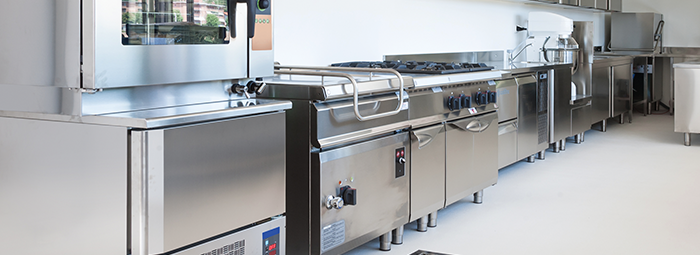
©2020 This excerpt taken from the article of the same name which appeared in ASHRAE Journal, vol. 62, no. 8, August 2020.
About the Author
Iurii A. Tabunshchikov is president of ABOK and professor at Moscow Institute of Architecture (State Academy), Moscow. Alexander N. Kolubkov is vice president of ABOK and director of LLC PPF “AK,” Moscow. Marianna M. Brodach is vice president of ABOK and professor at Moscow Institute of Architecture (State Academy). Iurii S. Avakian is certified ABOK specialist and chief HVAC specialist at LLC “APEX project bureau,” Moscow.
This article describes the method of calculation for airflow rate and cooling loads of ventilation and air-conditioning systems in commercial kitchens that takes into account full heat gains and moisture loads. The accuracy of this method is not absolute but is sufficient for designing ventilation and air-conditioning system air conditioning systems that successfully handle peak loads and provide desired air temperature and humidity in an occupied zone. Unlike the simplified method, in which only sensible heat is considered, this calculation method considers total loads and provides the most accurate result. This method is described in Reference 1.
In general terms, the calculation algorithm is as follows: find heat and moisture loads, find airflow rates, set the supply air temperature and calculate the indoor air parameters of the kitchen. If the result is not in the desired range, set another supply air temperature and/or increase the exhaust airflow rate and repeat all calculations of the indoor air parameters.
Let’s look at these steps in detail.
Calculation of Heat and Moisture Loads
Equation 1 describes total heat gains in the kitchen (kW):
Q tot = Q1 + Q2 + Q3 + Q4 + Q5 (1)
where
Q1 = Total heat gains from kitchen appliances, kW
Q2 = Total heat gains from people, kW
Q3 = Heat gains from electrical lighting, kW
Q4 = Solar heat gains through windows and walls, kW
Q5 = Total heat gains from outdoor air, kW
Q 1 can be found by using Tables 5A through 5F in Reference 2 for hooded and unhooded appliances during its idle (ready-to-cook) and cooking conditions. In estimating appliance load, probabilities of simultaneous use must be considered.2 References 3 and 4 recommend multiplying the heat gain from cooking appliances by the reduction factor called the simultaneous coefficient, which is the quotient of the number of appliances in use and the total number of appliances.
Read the Full Article
ASHRAE Members have free access to the full-text PDF of this article as well as the complete ASHRAE Journal archives back to 1997 in the Free Member Access Area.
Non-members can purchase features from the ASHRAE Bookstore. Or, Join ASHRAE!
Return to Featured Article Excerpts
Return to ASHRAE Journal Featured Article Excerpts